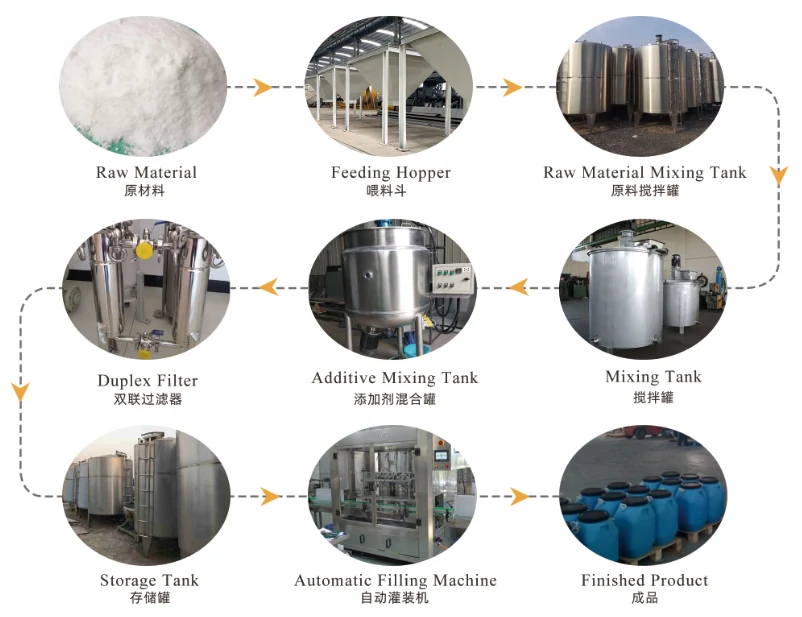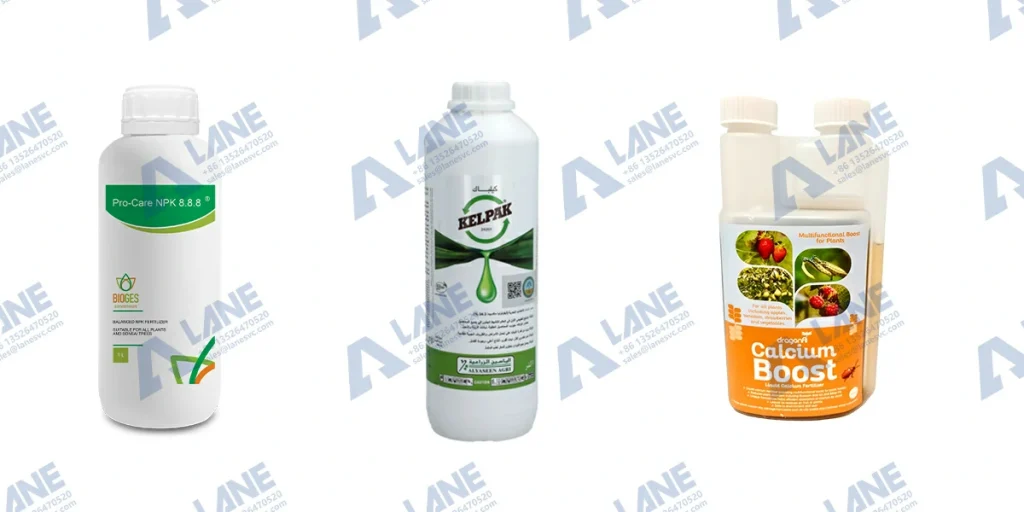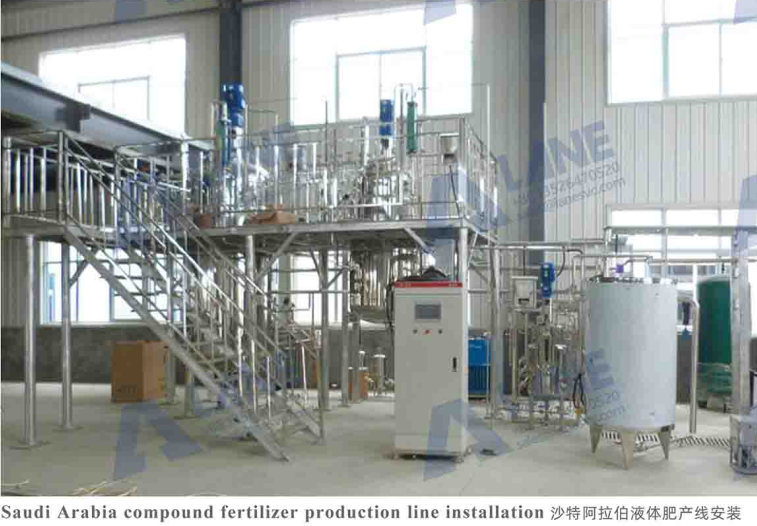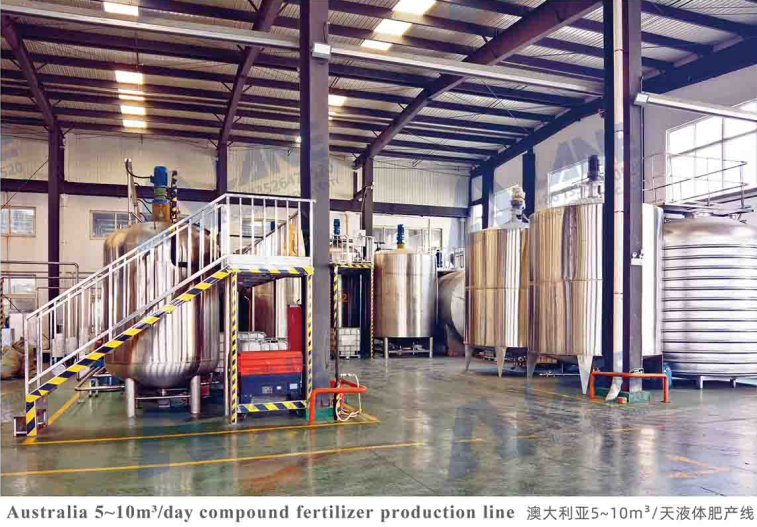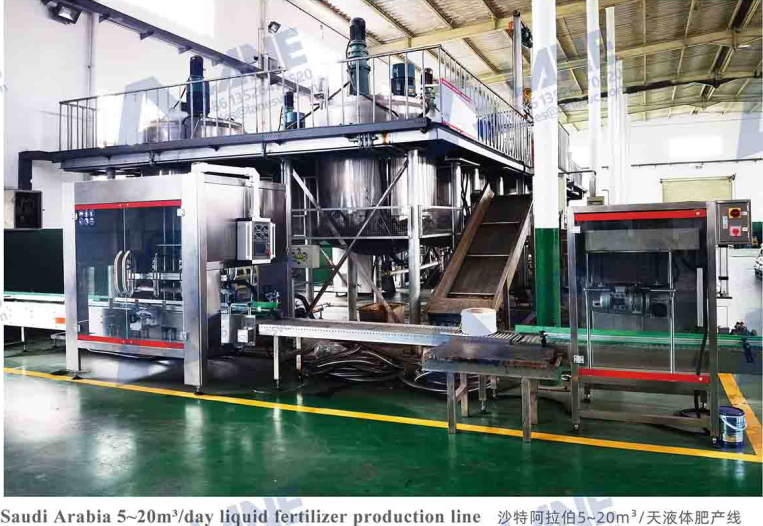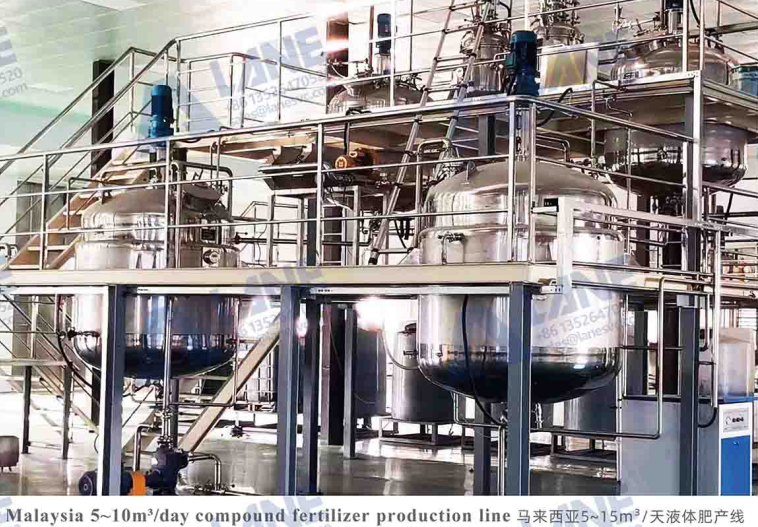
【Application】Multiple types of liquid fertilizers.
【Equipment 】Feeding hopper, Raw Material Mixing Tank, Mixing Tank, Dupiex Filter, etc.
There are three types of Bio-liquid fertilizer production line: clear liquid type, suspension type and paste type, which have theadvantages of easy absorption, quick effect, and can be mixed with herbicides.Common raw materials include ammonium nitrate, urea, phosphoric acid, potassium hydroxide and variousmicronutrient solutions.According to the formula, determine the correct ratio of nitrogen (N), phosphorus (P), potassium (K) andany micronutrients, mix the measured nutrient sources with water in the mixing tank, adjust the pH and temperature to facilitate mixing.The Bio-liquid fertilizer production linee has a simple structure and is easy to operate. It is suitable for most liquid fermentations.The equipment has good stability and is corrosion-resistant.
For more information, please contact us by sending an inquiry today! We can help you!
Preprocessing
Raw material mixing: Add the original liquid of biogas slurry into the acidification tank and mix it evenly with the liquid of composite functional microorganisms.
Adjustment conditions: Adjust the pH and moisture content of the mixture to ensure suitable fermentation conditions.
One fermentation
Fermentation in a fermenter: The mixed raw materials are sent into a fermenter for high-temperature aerobic fermentation. The temperature is generally controlled between 50 ℃ and 65 ℃ and lasts for 7-10 days.
Ventilation flipping: Forced ventilation through fans and regular flipping to maintain uniform oxygen supply and temperature.
Secondary fermentation
Aging tank fermentation: Transfer the fermented material to the aging tank for 15-20 days of deep fermentation to further decompose recalcitrant organic substances.
Control conditions: Reduce the moisture content to below 40% and gradually stabilize the temperature at around 40 ℃.
Flocculation treatment
Flocculation and sedimentation: The secondary fermentation broth is subjected to flocculation treatment to remove suspended solids and impurities.
Ultra fine filtration: After flocculation treatment, the fermentation broth is subjected to ultra-fine filtration to obtain a purer liquid.
Formulation
Adding nutrients: Send the filtered liquid into a compounding tank and add various nutrients such as nitrogen, phosphorus, potassium, and trace elements to make the final biological liquid fertilizer.
Low temperature drying: Ensure drying under mild conditions to avoid damage to microorganisms caused by high temperatures.
Filling and packaging
Automatic filling: Use a weighing type fully automatic filling machine to fill the final product into a container.
Quality inspection: Conduct quality inspection on the filled products to ensure compliance with standards.
